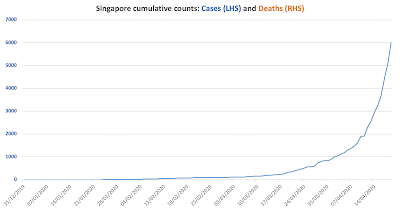The last four weeks witnessed an unprecedented level of jobs shut down in the U.S. (and elsewhere in the world). My earlier post here https://trueeconomics.blogspot.com/2020/04/16420-four-weeks-of-true-unemployment.html provided some comparatives. But here is a summary of jobs losses in every U.S. recessions from 1945 through 2019, and comparative figures for jobs losses in March to mid-April 2020:
Put simply, last four weeks of U.S. jobs shut downs are roughly equivalent to the total jobs losses in all U.S. recessions 1945-2002, or, looking in the opposite direction, to all jobs losses in every recession from 1960 through 2009.
As an important aside, U.S> recoveries have been slower and slower in recent decades in terms of jobs creation. 2007-2009 recession took 76 month to restore jobs numbers to pre-recession peak, while 2001 recession took 47 months. In fact, the last four recessions rank as the worst, second worst, fourth worst and fifth worst in terms of jobs recoveries.
This is not to say that the post COVID-19 shutdown recovery is going to be even longer - after all, the last four weeks saw shut down of jobs, not necessarily destruction of jobs, so some of the shut down jobs will be restored as soon as economic activity recovers. Nonetheless, the above numbers really are shocking.

















































